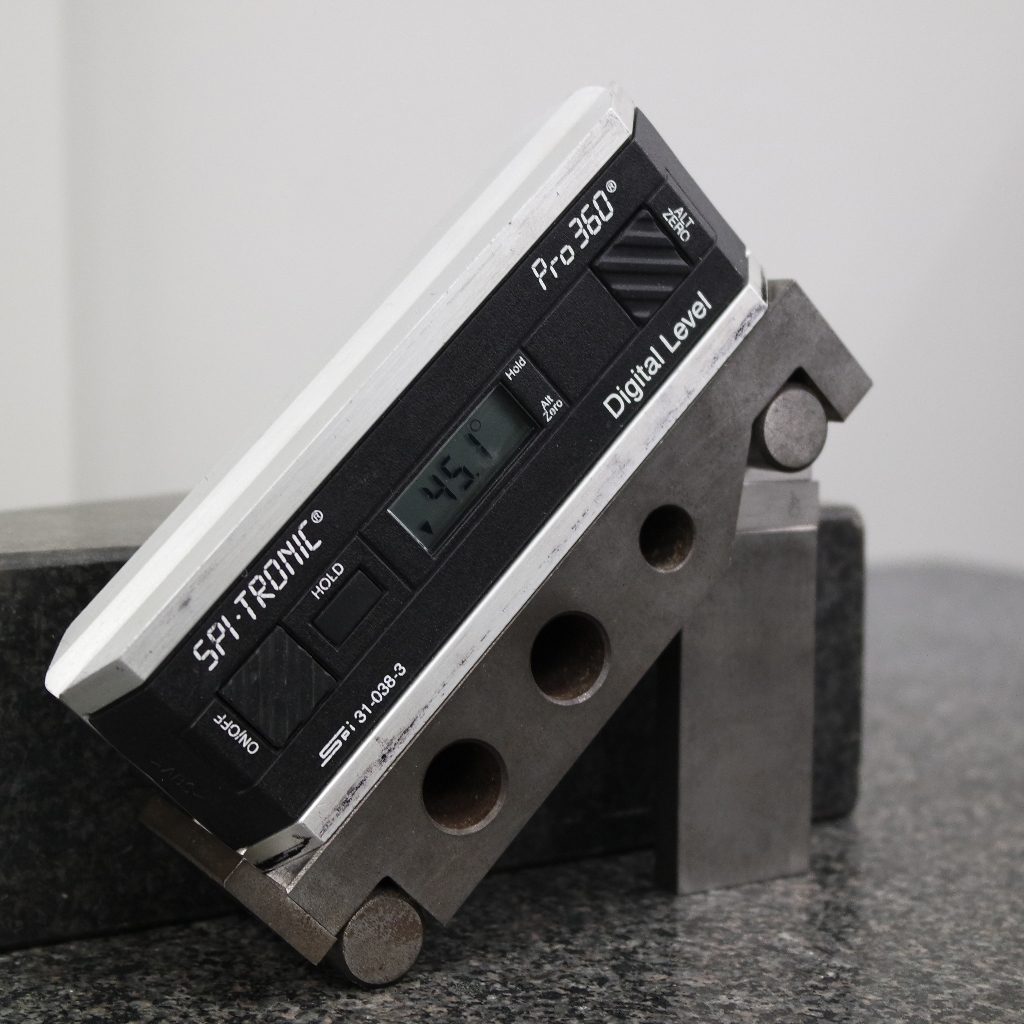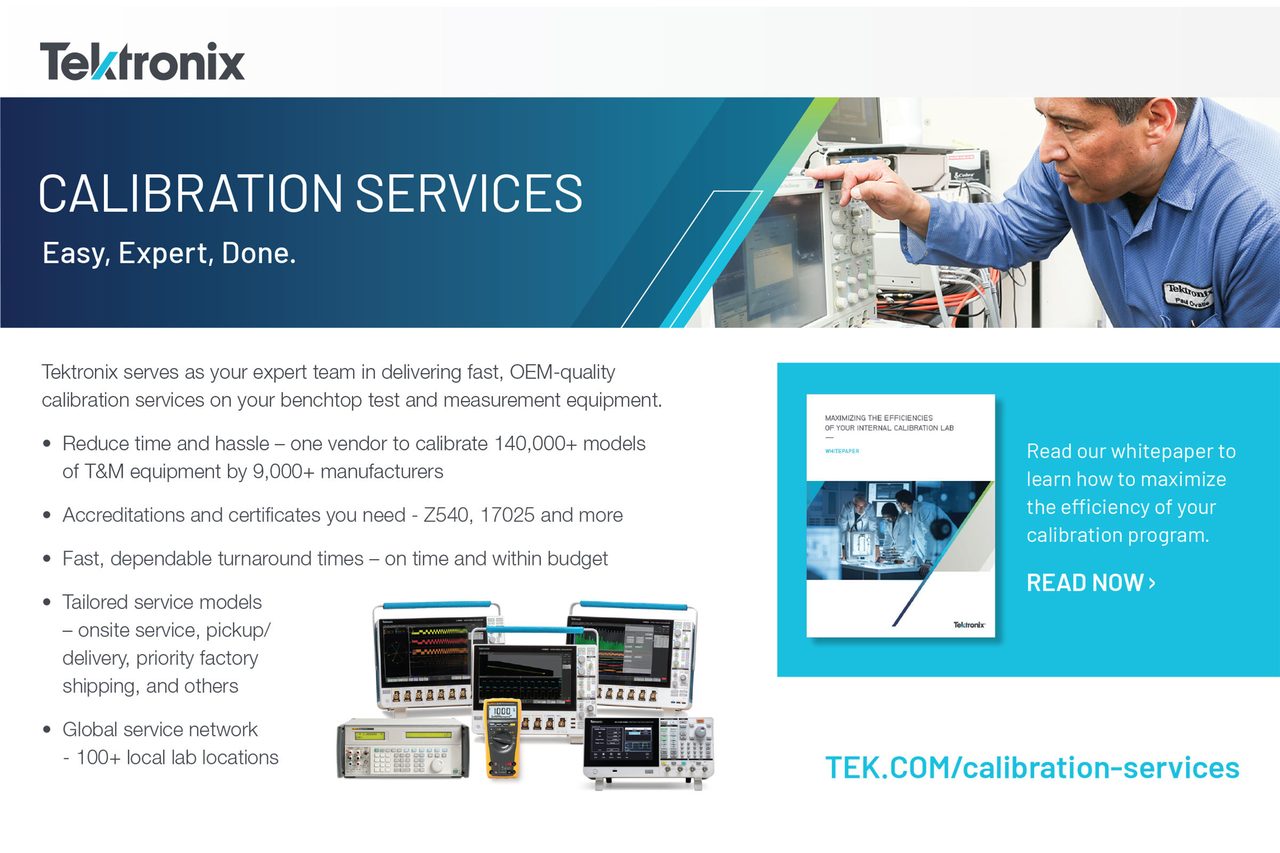Quality 101
It’s an important but often overlooked aspect of quality.
By Michelle Bangert
Calibration 101
Whether you’re doing internal calibrations or outsourcing it, it’s important to understand calibration basics. This can mean the difference between a company that runs smoothly—or scrambles to get by.
In many cases, having a better calibration process can make your work easier.
“Customers that really understand calibration, and coordinate efforts will enjoy success,” says Mark J. Hirsch, vice president sales and marketing at Martin Calibration Inc. Those that don’t may find themselves unnecessarily confused during the calibration process.
How to Think About Calibration
Consider the full impact of calibration on your product. James Guede, calibration and quality services manager at Advanced Technology Services, offers his advice on the calibration process and how companies can maximize the value of it.

Calibration Issues
For many manufacturers, finding equipment is a huge problem. If you’re like the customers for Fox Valley Metrology, this is your number-one hassle, according to a company survey, says Steve Toll, vice president – sales at Fox Valley Metrology.
The lowly pin gage, at under an inch wide and two inches tall, is one such item that can be difficult to track. “It’s pretty easy for it to get lost,” Toll says. “Keeping a well maintained database allows them to stay on top of calibrations, due dates, audit times, and quality issues.”
The Fox Valley Metrology survey found that other hassles involved tracking due dates, data entry, and staying on top of calibrations.
“It really just boils down to staying on top of the database,” Toll says. “It’s hard to stay on top of your equipment if you don’t even know what equipment you have.”
Though it can be a cumbersome process, it’s important to keep track of equipment and make sure things don’t get lost along the way.
Calibration Process
And if you’d rather not deal with calibrations in-house, you’re not alone there either. Calibration companies report an uptick in activities from companies that may have previously handled calibration on their own.
“I am seeing companies that have been doing a lot of internal calibrations themselves coming our way more,” says Toll. They’re “realizing their forte is manufacturing XYZ product, not calibration.”
For those new to the outsourced calibration process, there are a few tips to get the most out of the process. First, Toll suggests having a relatively clean list of what needs to be calibrated and having it at the ready, which will help calibration labs in determining a line item based quote.
Of course, choosing an outside partner is the biggest step in this process. Toll says it is important to consider what is involved in the service, all the factors beyond the calibration itself.
“Calibration is calibration,” Toll says. It’s important to also consider “everything that goes along with it, from the onboarding process with a new account, customer portal setup, logistics of scheduling,” he says.
Customers should walk through options and consider different variables involved with any company they are planning on working with.
For example, Toll notes that failing to do this can mean some billing surprises later on.
Rather than discovering hidden costs later, it’s important to be clear at the beginning. For example, he says customers should ask if there is an upcharge for certificates or repair evaluation fees. If not, they might find themselves surprised with thousands of dollars in additional fees that seemingly appear out of nowhere.
When working with a third party calibration lab—as with many things in life—communication is key. “If they are having issues or something doesn’t make sense, communicate with the lab,” Toll says. He strongly encourages this for best results with the calibration process as a whole. For example, if you look into an account and notice that a piece of equipment hasn’t been calibrated in 19 years, it seems likely that it hasn’t been used or perhaps has even been discarded.





Technical Impact
The best advice is to consider the big picture of calibration, not simply audit standards, says James Guede, calibration and quality services manager at Advanced Technology Services.
“How aware are you of the impact of your calibration process on your operations?” Guede says. It’s important to understand “the actual technical impact of your calibration process on your product itself.”
If this is done through visual management, executives can make informed decisions, Guede says, “up to the minute, up the week, or up to the month.”
More and more, customers looking for a fully integrated partner who can help manage the entire process—not simply perform a calibration. This leads to cost and production efficiencies, Guede says.
“The biggest thing in calibration is making sure that if you have a calibration program, really looking at it holistically, and really coming up with a plan that addresses not only the asset management piece for ISO 9001, but really understand how to manage the metrological piece, the actual measurement science, what happens within that lab,” Guede says. “I think folks out there, that’s the biggest thing they can learn. That way they’re more aware of what they can expect about that calibration process.”

